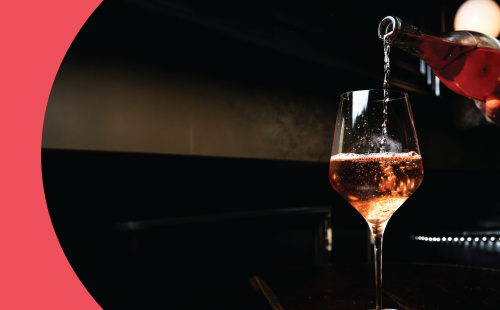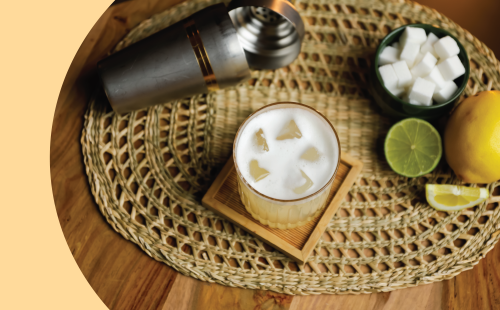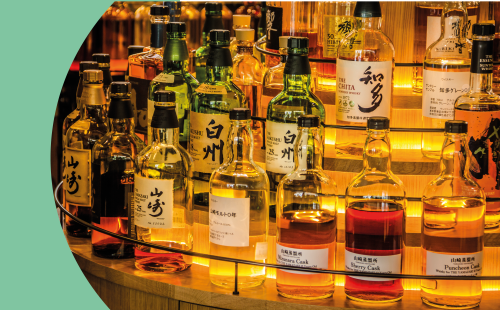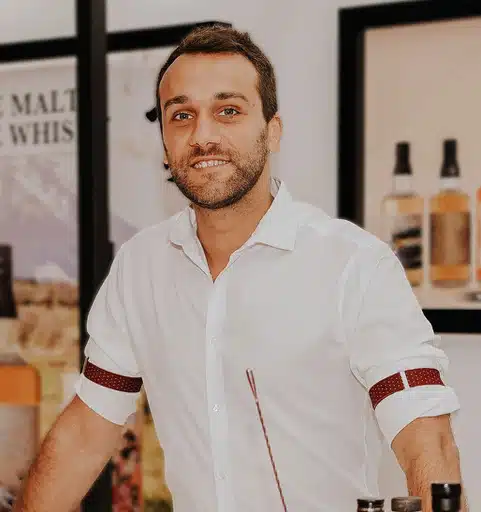Sparkling wine is any wine that contains carbon dioxide, which gives it its characteristic bubbles. Although we often immediately think of white sparkling wine, rosé and red sparkling wines are a thing too!
It is produced in different countries worldwide and comes in various kinds, each is defined by its region of origin, grape varieties, and production method.
First things first: how is sparkling wine made?
Most use the Traditional production Method (sometimes called “Méthode champenoise”), where secondary fermentation occurs in the bottle. Yeast and sugar are added, creating carbon dioxide (bubbles). The wine ages on lees for complexity before the sediment is removed and the bottle is sealed.
Traditional methods produce finer bubbles and more complex flavors due to bottle aging than the Tank Method (or “Charmat Method”). This method ferments the wine in large pressurized tanks, resulting in lighter, fruitier wines like Prosecco. Another technique, the Ancestral Method (“Méthode Ancestrale”), is the oldest, bottling wine mid-fermentation for a rustic, natural sparkle seen in Pétillant-Naturel (“Pet Nat”) wines. In contrast, the Carbonation Method adds artificial carbon dioxide to still wine, yielding a simpler, cost-effective sparkle without secondary fermentation, often found in entry-level sparkling wines.

Now that the technical terms are a bit clearer, lets dive into the 11 main types of sparkling wine.
1. Champagne (France)
Champagne is the most iconic sparkling wine, exclusively produced in the Champagne region of France (North-east part of the country) under strict regulations.
- Region: Champagne, France.
- Grapes: Chardonnay, Pinot Noir, Pinot Meunier in majority.
- Method: Traditional Method (Méthode Champenoise).
- Flavor Profile: Toasty, nutty, with notes of citrus, apples, and brioche. Dry styles dominate, but sweeter options exist.
- Styles: Brut, Extra Dry, Demi-Sec, Blanc de Blancs, Blanc de Noirs, Rosé.
- Examples of Brands & Domains: Dom Pérignon, Moët & Chandon, Veuve Clicquot, Perrier-Jouët.
- Cocktails: French 75, Mimosa, Champagne Cocktail, Pornstar Martini.
- Price Range: $40–$300+ per bottle (prestige cuvées like Dom Pérignon often exceed $200).
2. Prosecco (Italy)
Prosecco is Italy’s most popular sparkling wine, originating from the Veneto and Friuli-Venezia Giulia regions (north-west). Its approachable profile and sweeter style compared to Champagne make it perfect for casual sipping and cocktails like the Aperol Spritz.
- Region: Veneto and Friuli-Venezia Giulia, Italy.
- Grape: Glera (primary grape).
- Method: Tank Method (Charmat Method).
- Flavor Profile: Light, fruity, and floral with notes of apple, pear, and citrus. Often sweeter than Champagne.
- Styles: Brut, Extra Dry, Dry.
- Examples of Brands & Domains: La Marca Prosecco, Mionetto, Bisol, Nino Franco.
- Cocktails: Bellini, Aperol Spritz, Negroni Sbagliato.
- Price Range: $10–$40 per bottle.
3. Cava (Spain)
Cava is Spain’s answer to sparkling wine, primarily produced in Catalonia, and is often drier than Prosecco.
- Region: Catalonia, Spain (north-east of the country).
- Grapes: Macabeo, Parellada, Xarel·lo (and sometimes Chardonnay or Pinot Noir).
- Method: Traditional Method (like Champagne).
- Flavor Profile: Crisp and citrusy, with nutty and earthy undertones. Often drier than Prosecco.
- Styles: Brut, Seco, Semi-Seco, Dulce.
- Examples of Brands & Domains: Freixenet, Codorníu, Segura Viudas.
- Cocktails: Cava Sangria.
- Price Range: $10–$30 per bottle.
4. Crémant (France)
Crémant is lighter and more affordable than Champagne. Contrarily to Champagne or Prosecco, it does not have to be produced in a single specific region. It features fruity and floral flavors, and is a cost-effective Champagne alternative.
- Region: Various French regions, including Alsace, Burgundy, and Loire.
- Grapes: Varies by region (e.g., Chenin Blanc in Loire, Pinot Blanc in Alsace).
- Method: Traditional Method (same as Champagne).
- Flavor Profile: Lighter and more affordable than Champagne, with fruity and floral notes.
- Examples of Brands & Domains: Crémant de Bourgogne, Crémant d’Alsace, Crémant de Loire.
- Price Range: $15–$30 per bottle.
5. Franciacorta (Italy)
Franciacorta is Italy’s premium sparkling wine, often likened to Champagne for its complexity and elegance. It is produced using grapes grown within the boundaries of the territory of Franciacorta, in the province of Brescia (Lombardy).
- Region: Lombardy, Italy.
- Grapes: Chardonnay, Pinot Nero (Pinot Noir), Pinot Bianco.
- Method: Traditional Method.
- Flavor Profile: Rich, complex, with flavors of toasted nuts, honey, and ripe fruits. Often considered Italy’s Champagne equivalent.
- Examples of Brands & Domains: Ca’ del Bosco, Bellavista, Berlucchi.
- Price Range: $30–$80 per bottle.
6. Sekt (Germany and Austria)
Sekt offers more diverse flavors than Champagne, often leaning towards lighter and fruitier profiles. Higher-quality versions, like Winzersekt, can rival the complexity of Champagne, while more affordable Sekt provides an easy-drinking alternative to Prosecco.
- Region: Germany and Austria.
- Grapes: Riesling, Pinot Blanc, Pinot Gris, Pinot Noir (Spätburgunder), and others.
- Method: Tank or Traditional Method (depending on quality level).
- Flavor Profile: Varies from fruity and floral to rich and complex, depending on the production method and grapes used.
- Styles: Deutscher Sekt (German grapes), Sekt b.A. (specific region), Winzersekt (high-quality traditional method), Perlwein and many more.
- Examples of Brands & Domains: Henkell Trocken, Schloss Wachenheim.
- Price Range: $10–$25 per bottle.
7. Asti Spumante (Italy)
Asti Spumante is Italy’s sweetest sparkling wine. Its low alcohol content and fruity, aromatic character make it a festive, dessert-friendly alternative to Prosecco.
- Region: Piedmont, Italy (north-west of the country).
- Grape: Moscato Bianco.
- Method: Tank Method.
- Flavor Profile: Sweet and aromatic, with notes of peach, apricot, and honey. Low alcohol content.
- Styles: Fully sparkling (Spumante) or lightly sparkling (Frizzante).
- Examples of Brands & Domains: Martini & Rossi Asti, Cinzano Asti, Gancia Asti Spumante.
- Price Range: $10–$20 per bottle.
8. Lambrusco (Italy)
Lambrusco stands apart with its bold red or pink hue and fruity, fizzy style. While wines like Champagne or Franciacorta lean towards sophistication, Lambrusco brings a playful and rustic charm. Its red berry flavors and versatility in sweet or dry styles make it an offbeat counterpart to Prosecco.
- Region: Emilia-Romagna & Lombardy, Italy (north).
- Grape: Lambrusco varieties (blue grapes).
- Method: Tank Method.
- Flavor Profile: Light, fruity, and fizzy with flavors of red berries. Comes in sweet, dry, and off-dry styles.
- Examples of Brands & Domains: Riunite, Cleto Chiarli, Cantina di Sorbara.
- Price Range: $10–$25 per bottle.
9. Sparkling Rosé (Global)
Rosé sparkling wines captivate with their pink hues and a spectrum of styles ranging from dry and crisp to sweet and fruity. These wines can be made through direct pressing or blending red and white wines, depending on local regulations and traditions.
- Regions: Champagne (France), Veneto (Italy), Napa Valley (USA), Australia, and more.
- Grapes: Pinot Noir, Grenache, Syrah, Mourvèdre, Chardonnay, and others.
- Methods: Traditional, Tank, or Ancestral Method.
- Flavor Profile: Notes of red berries (strawberry, raspberry), citrus, and sometimes floral or creamy undertones.
- Styles: From brut to demi-sec.
- Examples: Moët & Chandon Rosé Impérial, Mionetto Prosecco Rosé, Chandon Brut Rosé.
- Cocktails: Rosé Spritz, Colletti Royale.
- Price Range: $15–$100+ per bottle, depending on origin and production method.
10. English Sparkling Wine (England)
English sparkling wine is gaining international acclaim for its crisp acidity and Champagne-like complexity.
- Region: England.
- Grapes: Chardonnay, Pinot Noir, Pinot Meunier among others.
- Method: Traditional or Tank Method.
- Flavor Profile: Crisp, with high acidity and notes of green apple, lemon, and brioche. Often compared to Champagne.
- Examples of Brands & Domains: Nyetimber, Chapel Down, Gusbourne, Ridgeview.
- Price Range: $40–$80 per bottle.
11. Cap Classique (South Africa)
Cap Classique is a great alternative to Champagne. It’s fresh, fruity, and creamy, made with similar grapes and methods. It’s high quality but much more affordable.
- Region: South Africa.
- Grapes: Chardonnay, Pinot Noir, Chenin Blanc.
- Method: Traditional Method.
- Flavor Profile: Fruity and fresh, with a creamy texture and hints of citrus and brioche.
- Examples: Graham Beck, Simonsig.
- Price Range: $15–$30 per bottle.
Related: Types of Champagne – Types of Proseco – Types of Cava – Types of Sparkling Water and more Types of Liquor.
FAQs
Why is Moscato not on this list?
Moscato is not on the list because it is typically not classified as a sparkling wine category on the same level as Champagne, Prosecco, or Cava.
While Moscato d’Asti and Asti Spumante from Italy are sparkling or semi-sparkling wines made from the Moscato Bianco grape, “Moscato” itself generally refers to a wine style rather than a defined sparkling wine type.
What is the difference between sparkling wine and Champagne?
Sparkling wine is a general term for any wine with bubbles, while Champagne refers specifically to sparkling wine made in the Champagne region of France following strict regulations.
What is the best sparkling wine for beginners?
Prosecco is often recommended for beginners due to its light, fruity, and approachable flavor profile.
How long can you store sparkling wine?
Non-vintage sparkling wines can be stored for 1–2 years, while vintage sparkling wines can age for 5–10 years or longer under proper conditions.





